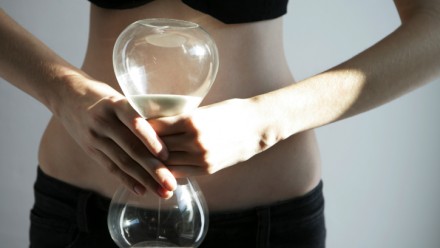Worrying about body image
Girls as young as seven have a poorer body image than boys, according to research to find out if a special exercise program for primary school children delivers physical and psychological health dividends throughout their lives, and on average, girls’ body image appears to decline over the next couple of years, the study, the most comprehensive yet, shows.
Don Byrne, Director of the Research School of Psychology, is leading the psychological component of the longitudinal study, which could trigger big changes in primary school physical education programs Australia wide, boost the health of the population and slash billions of dollars from future health budgets.
Collaborators at other institutions are handling the biomedical aspects of the five year project. The team has been tracking the physical and psychological health of about 850 children at Canberra schools.
“We want to find out whether early exposure to structured physical exercise establishes health facilitating behaviour in young people,” says Byrne. “Do they have a healthier attitude towards diet, smoking, and use of alcohol and other drugs? Would we have a healthier population in the long run?”
The study, funded partly by an Australian Research Council Linkage Grant, started when the children were aged seven to eight years old, with follow-up investigations after one and two years. The biomedical assessment included blood tests, bone and heart scans and fitness tests. The psychological assessment, aimed at gauging the children’s body image and their depression, stress and anxiety levels, centred on an interactive multimedia version of the traditional multiple choice questionnaire.
The children responded to questions – projected onto a big screen – by pressing keypads with the options ranging from “strongly agree” to “strongly disagree” represented by displays of smiling and frowning faces. After intake, a random half of the children were put on a structured exercise program designed by research collaborator, the Bluearth Institute. The weekly sessions emphasise movement, balance, and coordination, and include games. The other half of the cohort remained in traditional physical education programs. Some of the results are now in.
Poor body image was, as expected, related to obesity in both boys and girls. But even when obesity was factored in, girls had a worse body image than boys. “As the girls got older, their body image started to become worse,” says Byrne. And both girls and boys with poor body image were starting to show signs of depression and other aspects of negative mood.
In the latest follow-up study, the team added questions to find out whether the children were developing an awareness of heart disease, cancer and other chronic illnesses – the illnesses of middle age – and whether they thought they had any control over them. The team wants to extend the project throughout the children’s school lives and, perhaps, beyond. It also hopes to help set up parallel studies in PNG and Norway with collaborators there.










